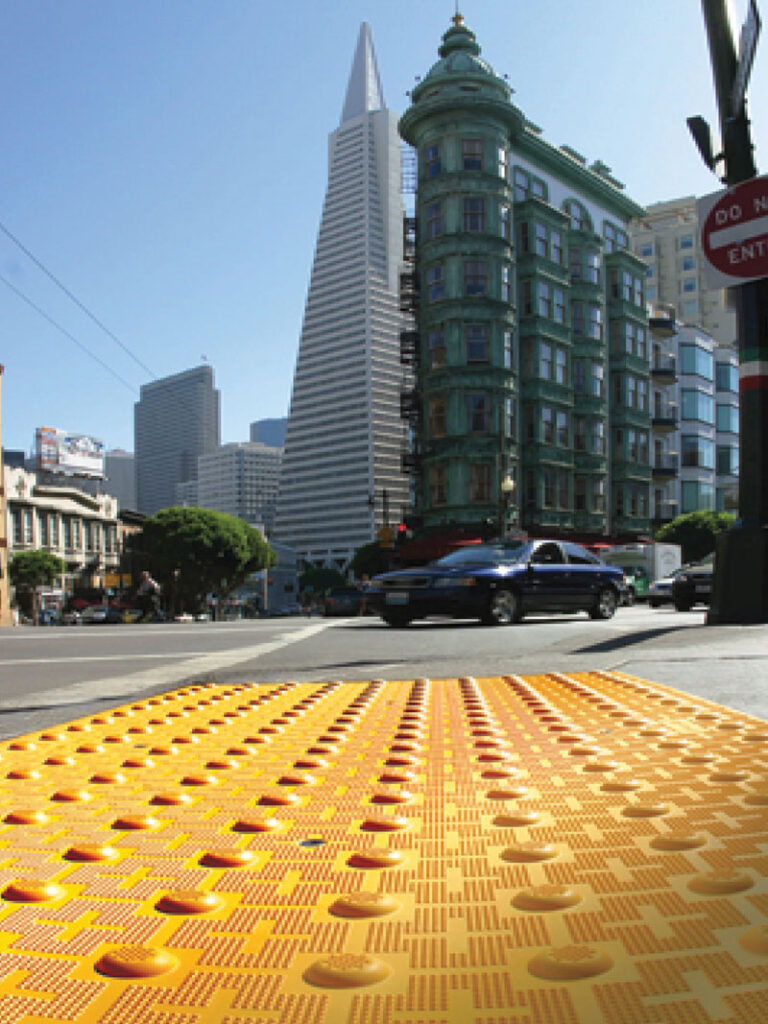[email protected]
Email us
813-480-2003
Customer Support
Mon - Fri: 8:00 am - 5:30 pm
Call for after hours
Email us
Customer Support
Call for after hours
The Americans with Disabilities Act (ADA) came into standardization in the 1990’s, and states all persons must have equal access to public spaces, jobs, infrastructure, and more. The ADA Accessibility Guidelines (ADAAG) were revolutionary because it held true for all persons, regardless of ability, and made specific mention of persons with disabilities. With the advent of these ADA regulations truncated dome tile, or Tactile Walking Surface Indicators (TWSI), soon became a requirement in public spaces across the country.
In our section titled ADA Regulations we break down what it means to be ADA compliant, and how exactly our detectable warning tiles meet and surpass these standards. This section also discusses the California Title 24 Requirements, which provide further accessibility guidelines for detectable warning pavers.
This section is your hub for all of our specifications and technical drawings, all of which are available as downloadable PDFs.
Installation or replacement of our ADA warning mats is remarkably easy, and able to be completed in under 5 minutes per tile. Tactile Services, LLC products can also be cut with ease, without voiding your warranty, in order to place ADA tiles in tricky or tight locations.
Further, the composite used in all of Tactile Services, LLC detectable warning pavers is abrasion and corrosion resistant, but it is also non-porous. While this is a good thing, because it allows all of our ADA Compliant Tiles to survive the harsh freeze-thaw cycles of northern winters, it also means grime collects on the surface. As such, it is recommended that all tactile paving is regularly cleaned and maintained in order to stay compliant with ADA regulations. This page details the complete installation instructions for all of our tiles, as well as the complete maintenance processes. As always, downloadable versions of these instructions are available via PDF on our Installation and Maintenance Instructions page.

Tactile Services, LLC. offers a large variety of ADA truncated domes, detectable wayfinding bar tiles, and curved radius tactile tiles. Please Fill out the email area below to request a quote a representative will be in touch with you within 24 hours.